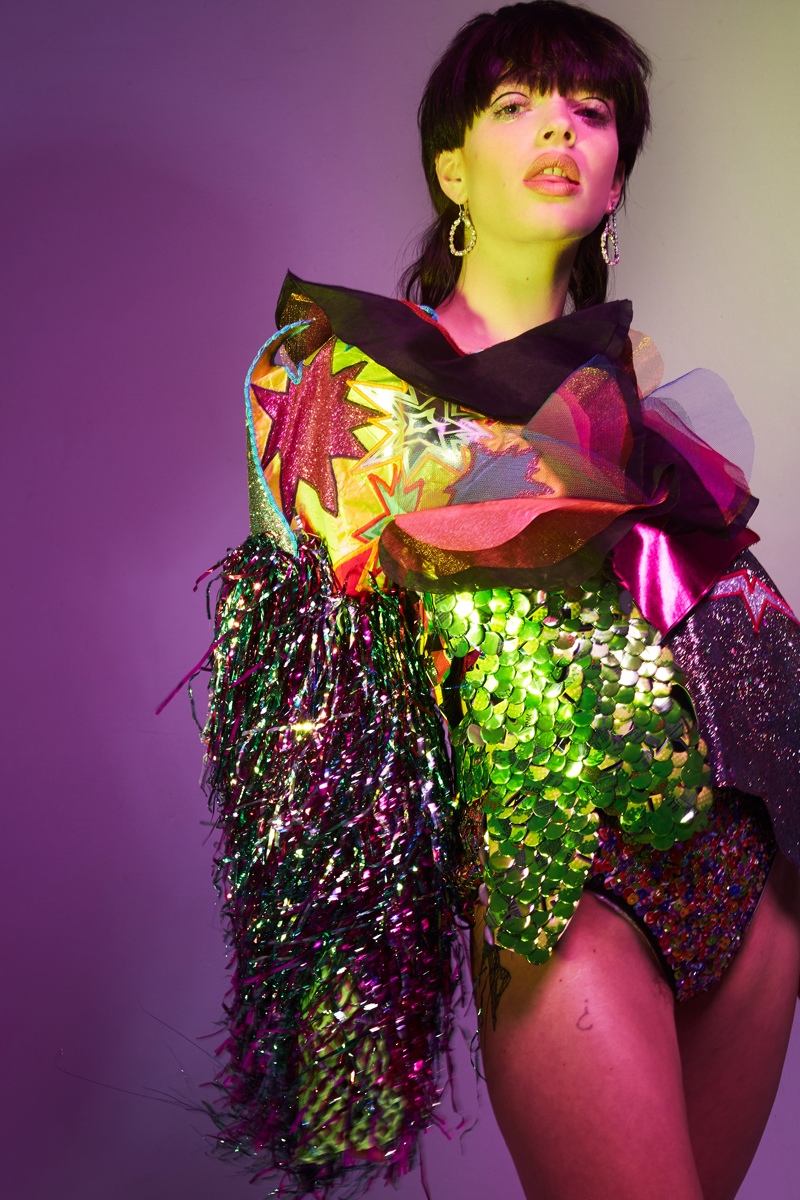When Auckland based design students Olivia Balle and Kristen Meaclem began work on their graduate collection, they looked at the continuing conversation around sustainable fashion. While many creatives have approached the issue with a focus on renewable fabrics and sustainable production, they challenged themselves to engage with the tether between fashion and the environment directly. So directly in fact, their final collection TRISH is literally made from trash.
The two gleaned their homes, lives and university for post-consumer waste like drink cans and chip packets to reincarnate as buttons, sequins and finishes. It was a statement about the continued value of “waste” and how we perceive garbage. Before, when an item’s use was extinguished it became trash, but in Olivia and Kristen’s hands it is simply “material”.
Why make a collection out of trash?
Kristen: As an environmentalist I know the way the world produces and consumes clothing is having devastating effects on the environment. It makes me feel extremely guilty when making new clothes, so I wanted to find a way I could make exciting fashion without feeling guilty.
Olivia: For me it was more about the challenge of working with unconventional materials. Working within the limitations of using post-consumer waste meant I was forced to really push boundaries within my textile experimentation.
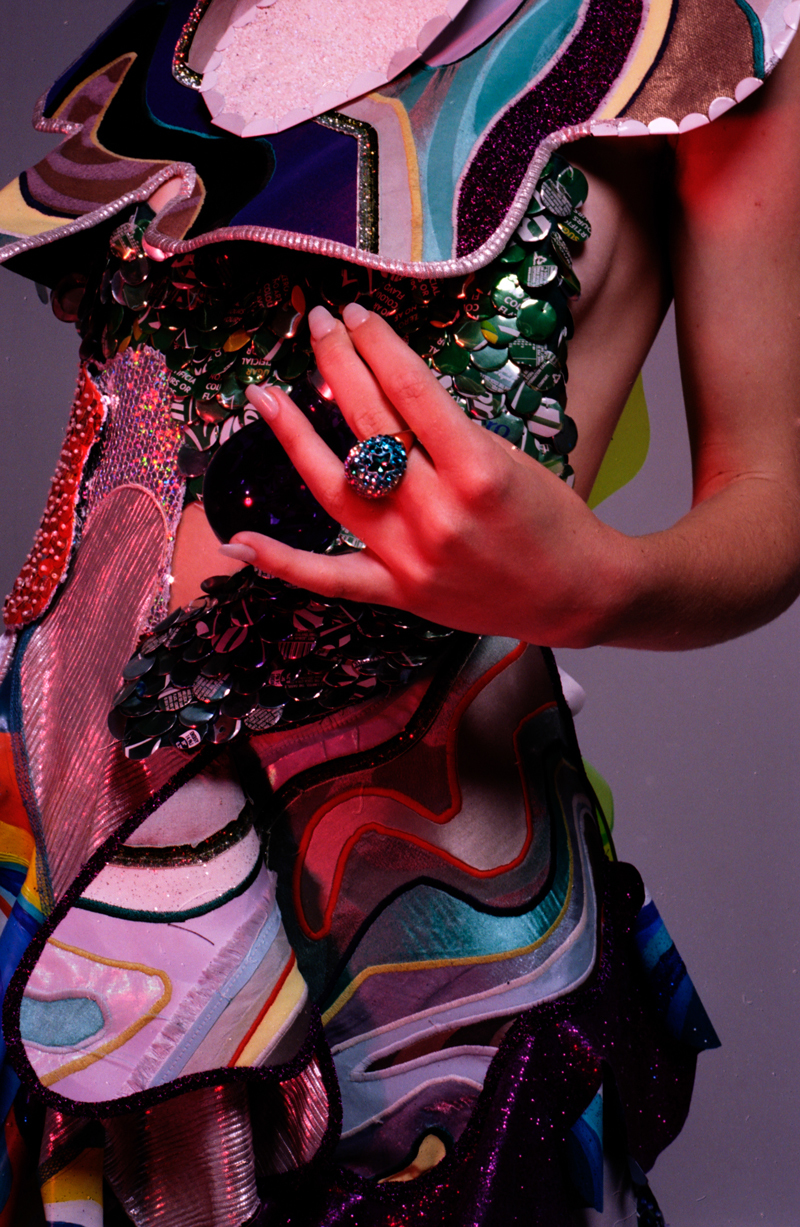
Where did the trash come from?
Kristen: Everywhere! Olivia’s junk food obsession. I hate junk food myself but it has the coolest wrappers. We got most of the cans from around uni, but lots were picked up from the street. Our fabrics came from uni scraps bins, op shops, our own personal stash and our community curtain bank.
Beyond the challenge and personal guilt, what wider message where you trying to make?
Kristen: That up-cycling is cool! You can create amazing clothing and art that doesn’t harm the environment. You don’t always need to buy new and contribute to a negative environmental cycle. You can use existing materials to create something modern and beautiful.
Can we talk a little about the technical advantages and disadvantages?
Olivia: The disadvantages were the fragility of trash, it rips easily and doesn’t heal. However, there’s also an intense beauty about the fragility of the textiles that’s comparable to classical couture garments. Another difficulty that continually arose was when we found an amazing material we only had a limited amount to experiment and work with.
The way the materials determined the end design was the biggest advantage: the process of applying traditional textile and fabric manipulation techniques to trash presented unique results that I never would have been able to achieve otherwise.
There’s also a stigma surrounding clothing made from trash or ‘trashion’, so from the beginning we were really committed to producing work that had a professionalism and beauty that transcended that. I had to find a way to transform the trash without adding anything new that showcased its beauty whilst also disguising the fact that it was trash.
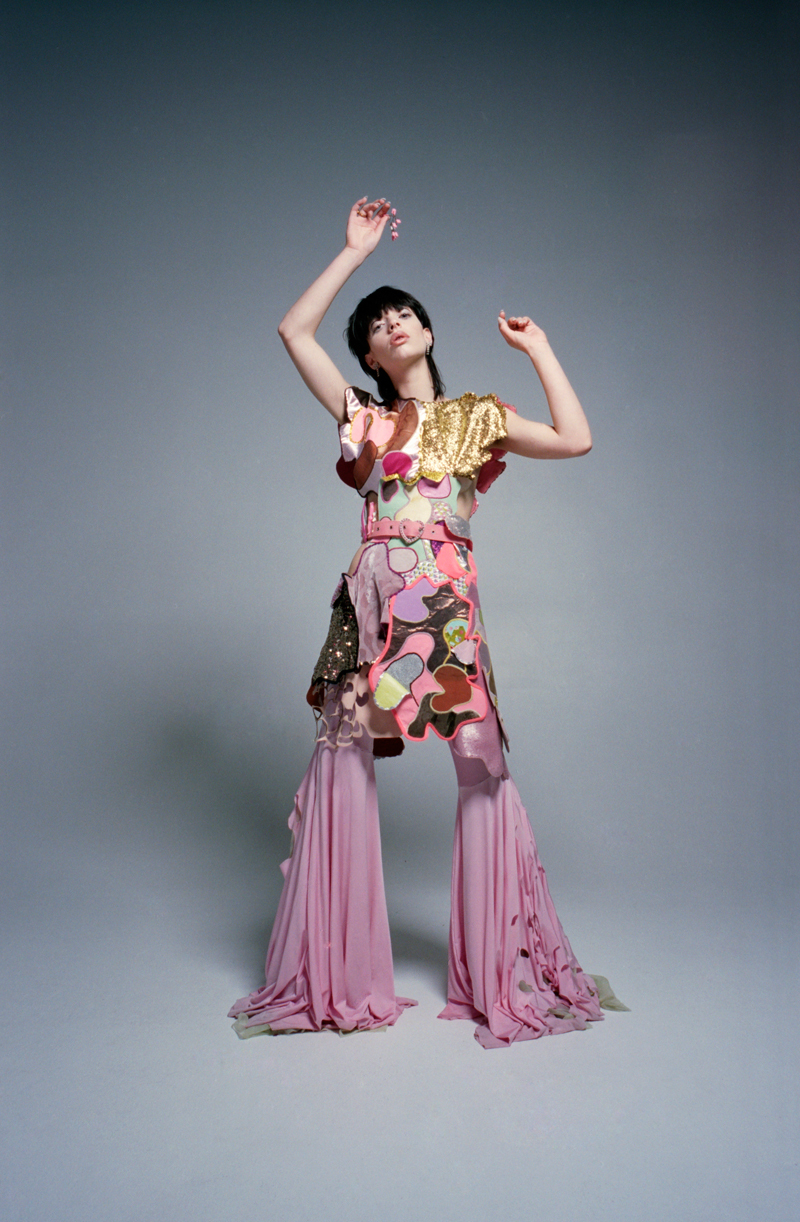
Did you discover any materials you’d consider using again in other projects?
Kristen: The aluminum can sequins and cheerleader pom poms were my favourite new discoveries that I’d love to push to new levels. I think using old sheets and curtains as toiling fabric is an overlooked resource. Toiling garments uses up so much fabric and these large pieces of old fabric are ideal to use.
Overall, did it change how you look at what you throw away?
Kristen: I hate throwing things away, I always have, that’s why I got into this project. No matter what it is I always consider whether it could be used again, but now I think of how it could be turned into a wicked garment.
So you’ll continue using trash?
Kristen: Definitely. This wasn’t just a project for me, it’s what I live and breathe. TRISH just opened my eyes even further to the abundance of resources we already have on our planet and I see no reason why I’d need to buy anything new to create fashion and art.
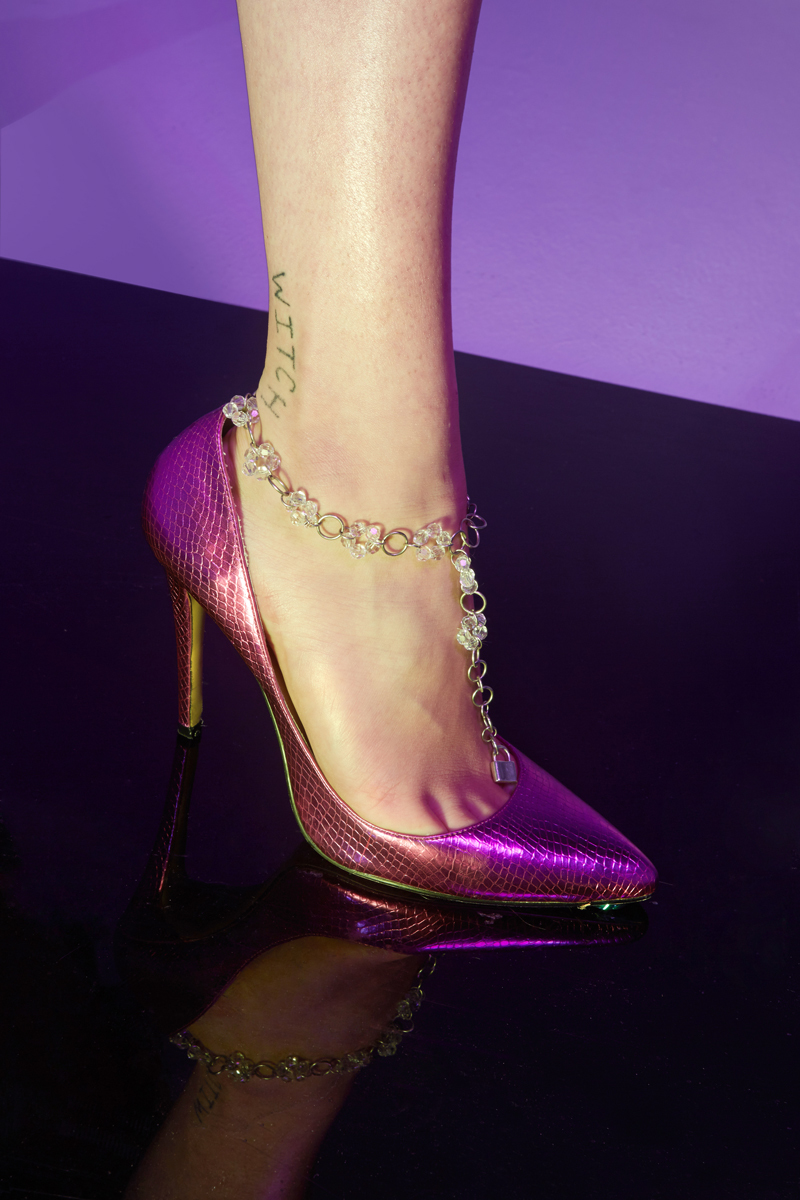
Finally, what’s the response been like?
Olivia: We have been really lucky to have so much support from our friends, families, lecturers and industry professionals. I think the reason we have had so much success with this project is a result of increasing awareness and concern surrounding the fashion industry’s harmful environmental effects.
We really wanted to challenge people’s perceptions of what sustainable or ethical fashion could be and I think this has really resonated with people. There are others however who just appreciate the craftsmanship or have appreciated it purely on an aesthetic level which was also really important for us because it was proof we achieved what we set out to do!

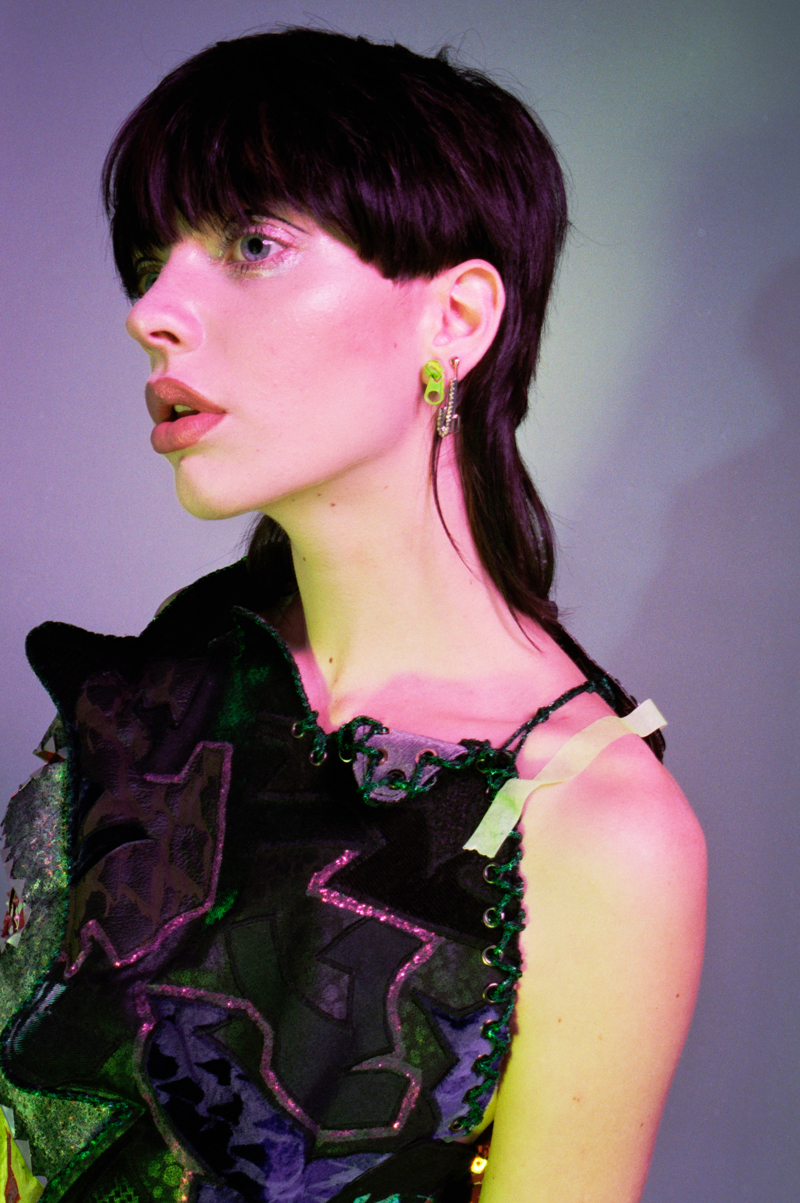
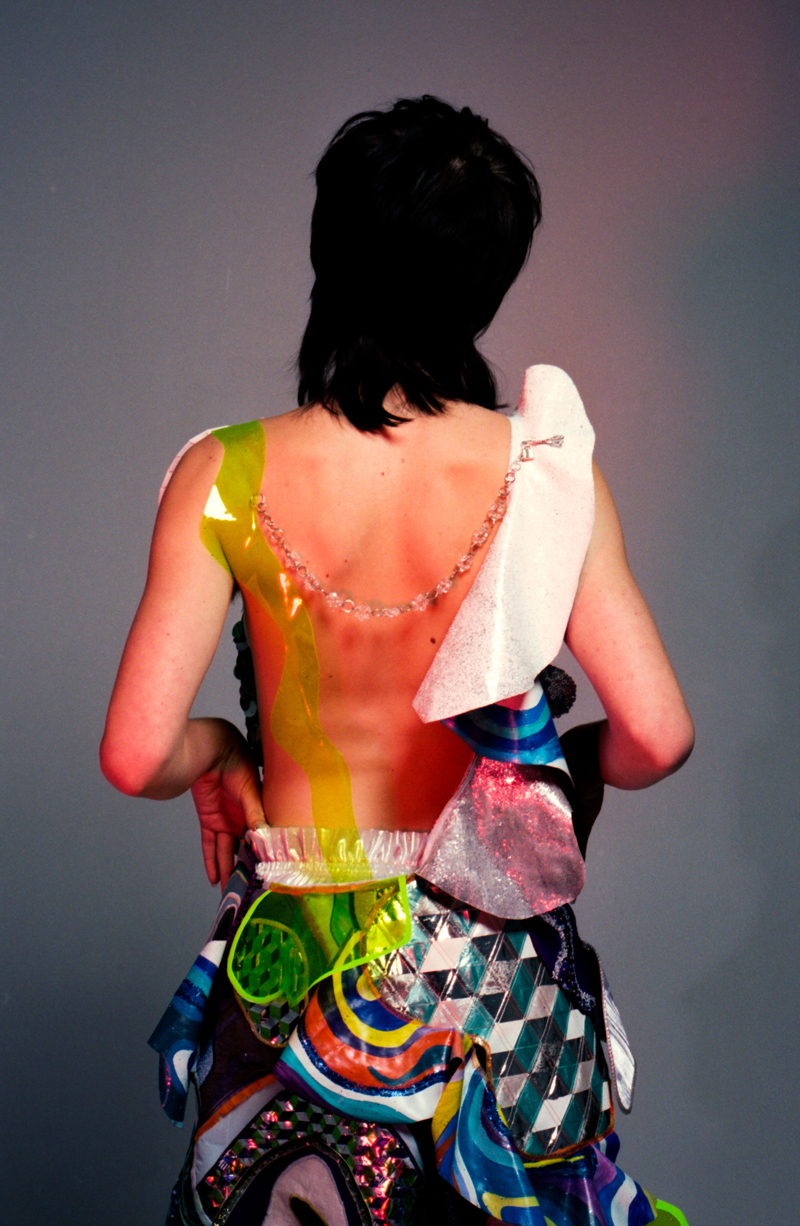
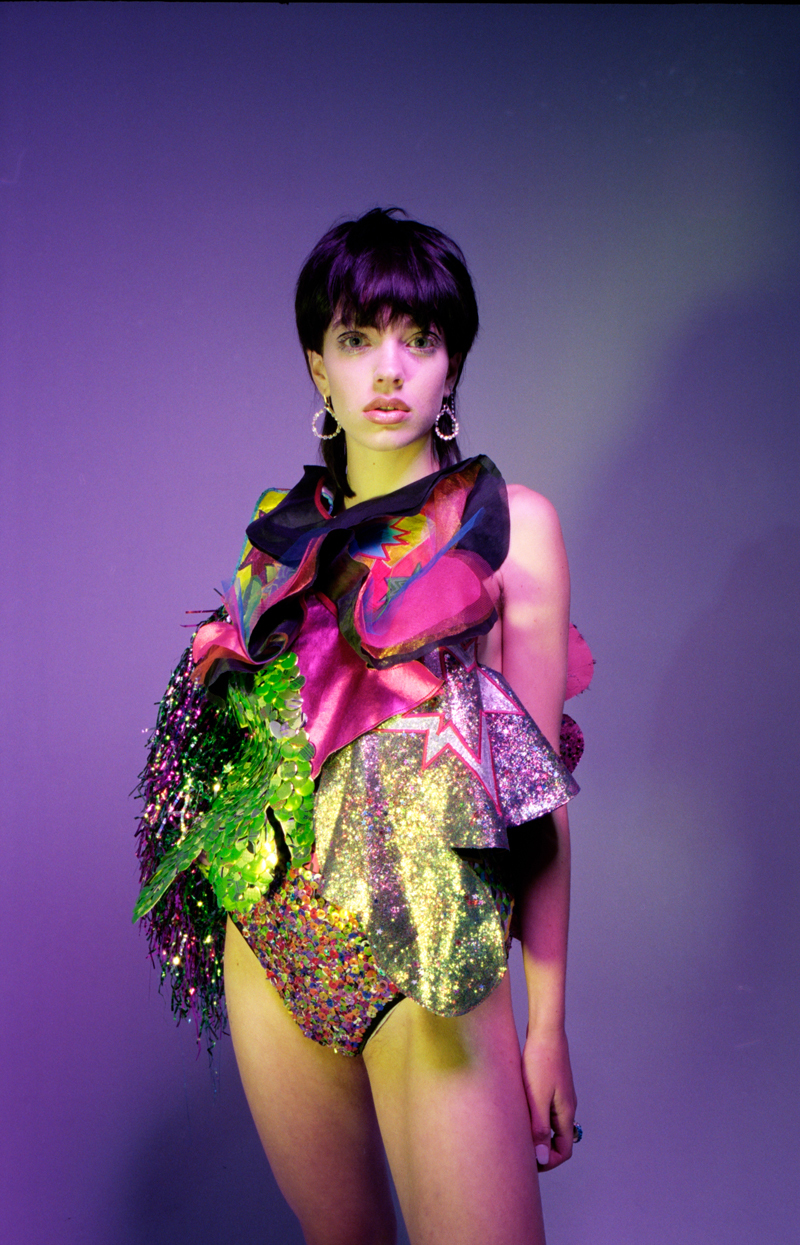
Credits
Text Wendy Syfret
Photography Ken Cao
Art Direction Imogen Wilson
Hair Tommy Stayton at Stephen Marr
Makeup Jun Chen at M.A.C cosmetics
Model Honor at The Others Agenc
